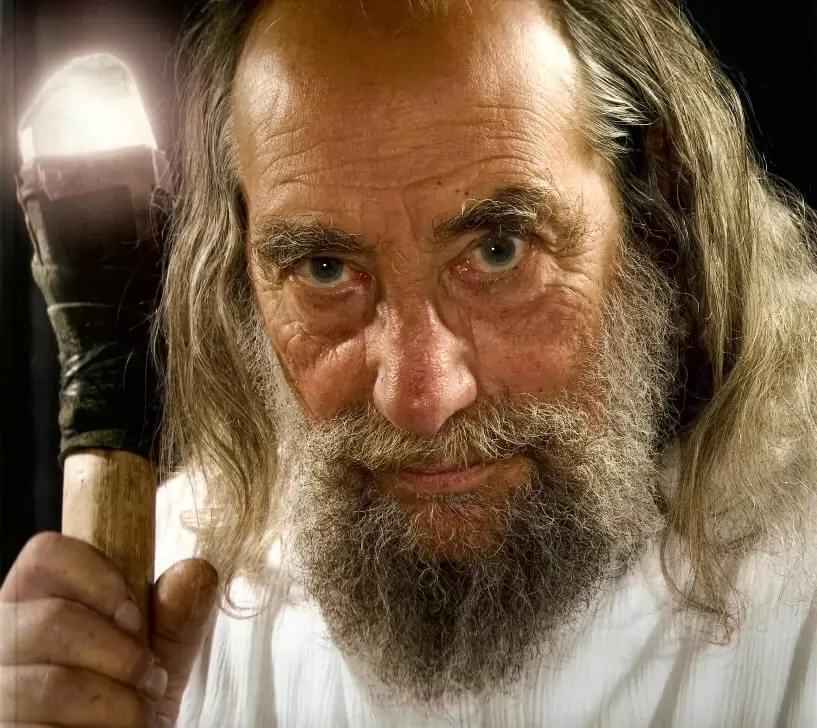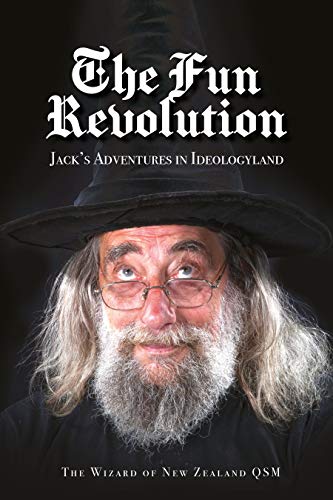The Living Work of Art Puts Itself in Context
The Beginnings of Modern Art
Modern Art as opposed to Impressionism etc., is essentially conceptual and has set about deconstructing the world.
It has done this through experimentation with new ways of applying paint, representing space, combining colours, portraying dream images, emptying the canvas of everything save mathematical or tonal values and randomising the choice and application of materials used.
A parallel process was taking place in all art forms. In literature Joyce, Pound and Eliot opened the way for a transformation of narrative prose and poetry.
Artists & Art Objects
The modern artist was still however the creator even though isolated from the mainstream of socially acceptable art which affirmed the values of the patrons. The work of art was still an object, whether a painting, sculpture, symphony, poem, play or novel. It was a commodity and could still be owned and sold or published or performed and the creator was still separated from his or her creation.
Artist, performer, and clientele remained in basically the same separate roles they had held since the Enlightenment and the rise of the mercantile bourgeoisie.
During the first few years of the 20th Century even these distinctions began to disappear. Relativity Theory, Quantum Mechanics, Psychoanalysis, Comparative Sociology and Anthropology all appeared at this time.
The First World War which broke out shortly afterwards so weakened confidence in traditional intellectual, political and moral authorities that rootless power brokers flourished surprisingly quickly.
Duchamp, Art Objects and Art Galleries
At this dramatic turning point in history it was Marcel Duchamp who began the process of redefining the concepts of artist, art work and clientele. With the appearance of the first “readymade” the separation of artist from artwork or creator from creation was begun.
At the same time the lack of craftsmanship, previously an integral part of the value of a work of art, made the position of the client (whether appreciator or would-be purchaser, private individual or government appointee) entirely dependent on the reputation of the artist which was increasingly determined by an elite of gallery directors and art critics.
If Duchamp’s urinal had not finally, after much persistence, been exhibited in an art gallery it would never have become a work of art as “A Fountain” by R. Mutt.
Who Defines Art?
At this critical moment a number of alienated art gallery controllers and art critic journalists began the process of defining and thereby controlling public “high art”. Great numbers of nonconceptual works of art were still being created by artists, exhibited in galleries and purchased by clients and the new conceptual art was extremely unpopular with most people.
Market forces combined with a sense of tradition and continuity would have prevented art based on the destruction of craftsmanship and historical meaning from becoming anything more than a thought-provoking curiosity.
At this time however the destruction of the old historical moral order through the first world war led to the rise of what Marcuse calls the “welfare-warfare state.” The past was rejected as millenarian secular ideologies promising a New World Order replaced the previous mixture of religious virtue and mercantile entrepreneurialism.
The power of the state increased enormously as compulsory taxation and compulsory education grew rapidly and unwilling dependence on state controlled institutions funded by taxes grew with it.
This interpretation would explain the situation where normal feedback from the social environment in the form of opposition by the people who provide material support for any human activity was prevented by the monopoly of resources and information distribution in government bureaucracies.
A new elite formed basing its control on “legalised” violence unmodified by aesthetic enchantment, exemplary morality or logical explanation. Pandora’s box was opened but where was hope ?
Modern Art is Essentially Negative
Art became anti-art, education became anti-education, religion became anti- religion.
In this Orwellian world Ugliness becomes Beauty, Folly becomes Wisdom, Vice becomes Virtue, Falsehood becomes Truth, Envy becomes Justice, Conformity becomes Radicalism, Slavery becomes Freedom and so on.
The important quality of spirituality is assigned to vulgar, materialistic morons and denied to refined and intelligent religious contemplatives. History is first rewritten by scoundrels to vilify good men and women and finally destroyed and replaced by ideologically sound and politically correct social studies.
This is written with passion since only passion could provide enough motivation for me to make such a radical break with the present establishment.
A Living Work of Art?
The concept of a Living Work of Art is the ultimate concept in almost a century of increasing domination of the conceptual over the material, there is after all no artist and no work of art and no clientele.
Nevertheless creativity is evidenced in the imaginative life style, the social engineering and the unique cosmological synthesis which avoids the mockery and destructive nihilism which usually accompanies post-modern art.
Counterparts?
The major artists in the post-modern period who will most likely be compared with the Living Work of Art will be Gilbert and George, (a narcissistic form of performance art based on a an unimaginative, decadent life-style and depending on the present artistic establishment for its success), Christo (a genius of persuasion whose social engineering skills triumphed with the wrapping of the Reichstag, but whose imaginative creativity and response to the ugliness and despair of the world is minimal), and Joseph Beuys.
Joseph Beuys
There are many similarities between “The Wizard” ( the title of the Living Work of Art) and Joseph Beuys, but also great differences. To make it easier for me I will adopt the third person when discussing the Wizard.
Both were aircrew officers, Beuys in the Luftwaffe, The Wizard in the RAF.
Beuys was involved in the brutal offensive of one of the New Order totalitarian secular states, The Wizard was doing his peacetime National Service as a citizen of the British Empire, a traditional constitutional monarchy, which stood alone against the violent, puritanical, unimaginative German National Socialists.
Beuys was traumatised by his experience of war and crashing his plane. The Wizard loved his time as a conscripted Pilot Officer in peace time, much preferring it to his time as a conscripted schoolboy in the education system.
Both were university academics in the 1960s, both were skilled in demagoguery and took an active part in directing student discontent and both were dismissed by the university authorities. Beuys however was intensely serious and was dismissed by the university authorities for rabble rousing but took legal action against them and kept his job.
The Wizard founded Action for Love and Freedom (or ALF) and started the Fun Revolution to bring mirth and harmony to the depressing anti- intellectual environment of an Australian university at about the same time. He too was dismissed but for not being serious enough and for stopping student riots by distracting the students away from less skilled left-wing demagogues. He did not sue the university as he was advised to do but persuaded the Vice Chancellor, (who did not have the authority to save his career, but who admired his teaching skills and responsible use of his power over crowds) to appoint him official University Wizard on an honorarium paid jointly by the University and student administrations.
Both The Wizard and Josef Beuys founded political parties.
Beuys founded the Greens, an angry group acknowledging no religious virtues, no political allegiances, bound by no responsibilities and aiming at destroying the last remnants of traditional responsible government by skilfuly building up hysteria over essentially trivial issues by deliberate exaggeration. The Wizard founded a political party at about the same time, the Imperial British Conservative Party which accepted the authority of the Crown whilst criticising actions carried out by the Crown and which proposed the abolition of compulsory taxation and compulsory education twenty-five years before any other political party. Essentially the party preferred to trust a landed aristocracy with ideals of custodianship of the land and a love of hunting to a nouveau rich bourgeoisie who could buy and sell anything for a profit and whose control of information (propaganda) through media monopolies played a major part in undermining traditional authorities, destabilising social life and even provoking and maintaining the first and second World Wars.
Rule by “the people” inevitably means rule by an oligarchic elite whether aristocrats, businessmen or a bureaucratically empowered elite of party officials. There being no other choice the party founder opted for the first because of their love of the natural environment and more skilful and thus less coercive control of the people.
Both Beuys and The Wizard saw their art as essentially therapeutic.
Beuys claimed he was helping the Germans come to terms with their shameful past but by becoming a successful member of the nihilistic artistic elite and few Germans would benefit from his deadly-serious heavy- handed arrogance.
The Wizard sees his free open air shamanic performances and media manipulating skills as highly therapeutic. He is helping the British people in Australia, New Zealand and ultimately Canada, the USA and Great Britain to recover their proud past which is being vilified by the new power elite in their need to destroy all history, all memory, all virtue and ultimately all authentic human meaning to bring about the New World Order based entirely on state violence and utilitarian justification.
The Wizard has completely failed to evoke any attention or interest from the intellectual and political authorities except as an amusing, absurd clown. However the media coverage and consequent expansion of the Wizard’s mirth-provoking activities increases his therapeutic impact. It is hard to estimate this but it certainly a thousand times more successful than that of Josef Beuys.
Both Beuys and The Wizard constructed integrated cosmologies to unify the fragmentation resulting from materialism reductionism and specialisation.
Beuys’ theories are a series of vague generalisations of little intellectual rigour whereas The Wizard has synthesised and carefully integrated current ideas in all fields of scientific knowledge.
Josef Beuys stated that the world needed the appearance of a powerful magician in a university.
Ian Brackenbury Channell became official university Wizard in 1969 was recognised as a Living Work of Art in l972 and became The Wizard of New Zealand in 1990.

